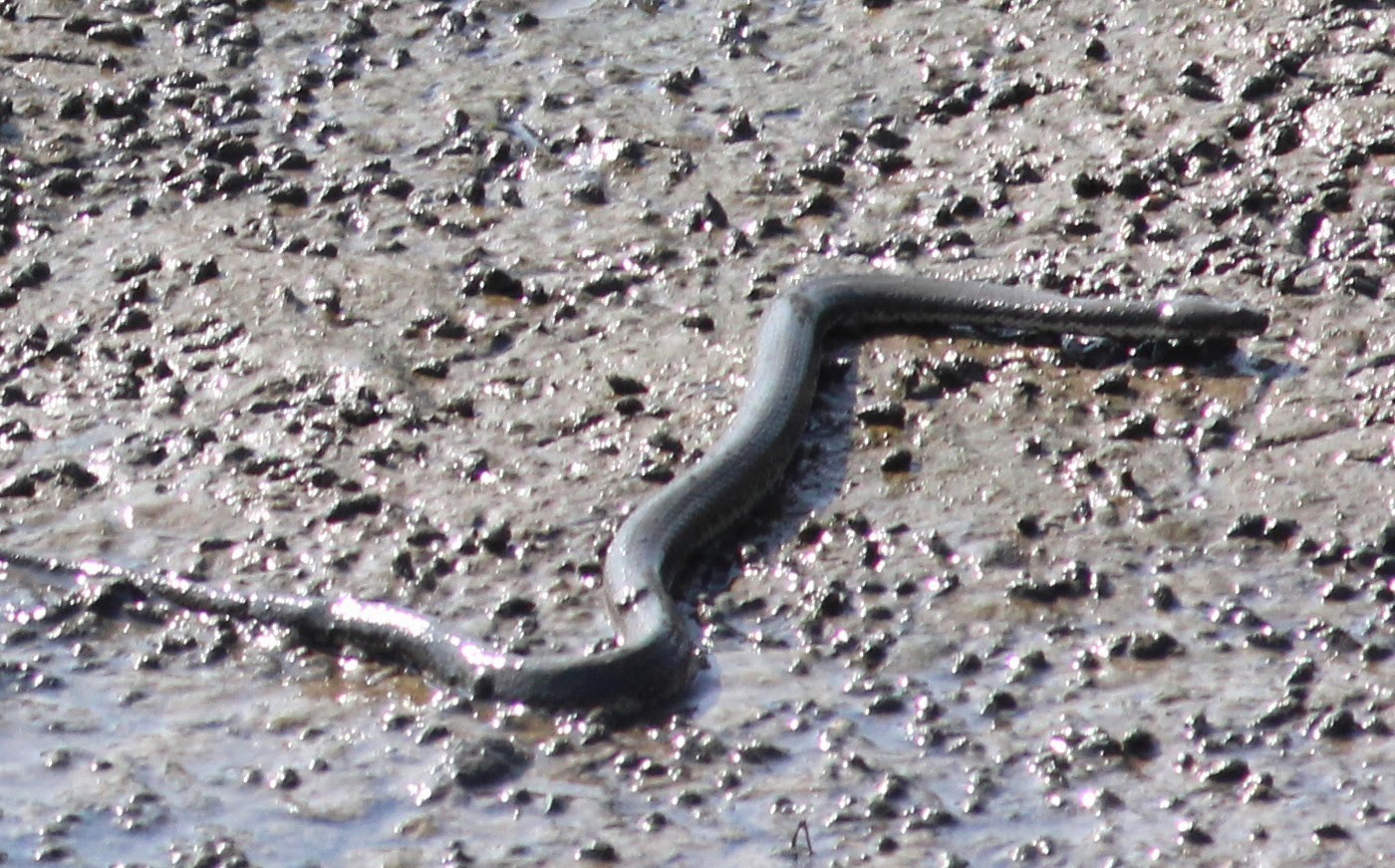As i was clicking my ancient camera which sounded like an old typewriter, it must had stunned the poor little bird. (Note: you can already see its crown plumes extending from its head. It was reported that male plumes are typically longer and sometimes more numerous than the female's. Males with damage crown plumes may find it difficult to obtain mates).
It then decided to detour and walk towards a group of Little Egrets or sometimes also known as Lesser Egrets. You can see that they were wearing their famous yellow "sandals". The Javan Pond heron subsequently disappeared into the mangroves.
Foraging nearby were two Chinese Pond Herons (below).
Can't really see its crown plumes here but its elongated back plumes can clearly be seen.
I only realised back at home that these Chinese Pond herons were actually staring at a snake (below right of photo).
I am not sure whether this was a sea snake or a "pambu" but from my initial research it could either be a "Crab-Eating Mangrove" snake (Fordonia leucobalia) or a "Glossy Marsh" snake (Gerarda prevostiana). Could it also be a "Dog-faced Sea Snake (Cerebus Rynchops)? Meantime as you can see there are also snakes on the mudflats, in this case on a river bank. So beware birders who like to venture deep into the mudflats.
For comparison purposes, here are some adult Chinese Pond Heron and Javan Pond Herons in full breeding plumage. Photos were taken at the Bagan Belat mudflats a few days later.
 |
| Javan Pond heron |
 |
| Chinese Pond Heron |
From my brief observation recently at the two different locations it appears that the population of the Javan Pond Heron was slightly more than the Chinese Pond Herons. Need more field trips from other fellow birders to verify this population numbers.
















No comments:
Post a Comment